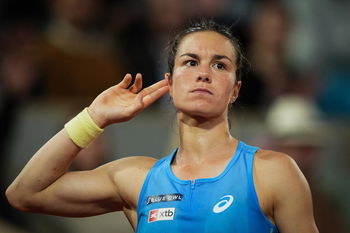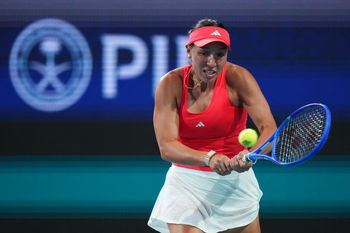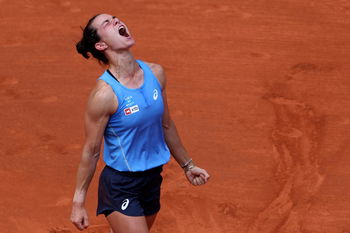"She was ahead in every phase of rehabilitation," recalls the surgeon who operated on Boisson

This is the beautiful story of Roland-Garros 2025 and perhaps even the beautiful story of the WTA season. Ranked outside the top 350 before the tournament, French player Loïs Boisson defied all odds to reach the semifinals in her first Grand Slam appearance.
The 22-year-old from Dijon, a wildcard entry, eliminated Elise Mertens, Anhelina Kalinina, Elsa Jacquemot, Jessica Pegula, and Mirra Andreeva. She will now rise to at least 65th in the rankings after defeating three seeded players, including two from the top 10.
Against Pegula and Andreeva, she thrived on the energy of Court Philippe-Chatrier, first overturning the American before overwhelming the 18-year-old Russian. This Thursday, Boisson has a date with history.
The first Frenchwoman to reach the semifinals at Porte d'Auteuil since Marion Bartoli in 2011, she could become the first from her country in 20 years to advance to the final. Back then, it was Mary Pierce who fought her way to the last step before falling to Justine Henin.
To keep her chance of emulating Pierce—who won Roland-Garros in 2000—she will need another heroic effort, as world No. 2 and 2022 finalist Coco Gauff now stands in her way.
Ahead of this match, following the first semifinal between Aryna Sabalenka and Iga Swiatek, Bertrand Sonnery-Cottet, the surgeon who operated on Boisson (after she suffered an ACL tear a year ago), reflected on her remarkable rehabilitation and swift return to top form.
"I got chills! It's incredible—you have no idea where she's come from. I've operated on many elite athletes, and among the most mentally impressive are Zlatan (Ibrahimovic), Charles Ollivon, Ada Hegerberg, and her.
Zlatan and Charles were at the end of their careers. Here was a 21-year-old unknown, on the verge of a breakthrough, suddenly facing a nine-month tunnel of constant doubt—questions about injury management and her level upon return.
Injured athletes suffer. It's a long process, and unless proven otherwise, returning at a higher level is unimaginable. In Loïs' case, it's exceptional.
Within thirty seconds, you know who you're dealing with. Loïs has an incredible character. She tests people—she needed to trust me and see my expertise.
She asked endless questions about surgery details, recovery. She even requested my scientific publications on the subject. She digs deep.
She wasn’t playing the victim—she took charge of her recovery, backed by a strong, united, and skilled team. Every check-up was just confirming her progress.
And she was ahead in every rehab phase. She’s reserved, not overly expressive, but she’s a good kid—not arrogant at all.
She’s obsessed, so passionate. After three months, she asked if she could hit balls again, saying it was crucial for her strokes. I warned her it’d risk her knee.
She replied, ‘What if I sit on a chair?’ I finally gave in. She’s a machine. An athlete with this mental strength—I don’t know if there have been many. At the slightest concern, she messages me. We spoke Sunday morning after her left knee pain Saturday (against Jacquemot in the third round).
The pain was fleeting, just during a few serves—normal at this stage, given the timeline. She plans to see me after Roland-Garros—hopefully as late as possible," the surgeon told *L’Équipe*.

















 Vacations, Rest, and Nutrition for Stars During the Off-Season: Inside a Crucial Break
Vacations, Rest, and Nutrition for Stars During the Off-Season: Inside a Crucial Break  More Than a Match: Pay Inequalities Between Women and Men in Tennis
More Than a Match: Pay Inequalities Between Women and Men in Tennis  Changing coach or reinventing yourself: the off-season, time for big decisions
Changing coach or reinventing yourself: the off-season, time for big decisions  The Rafa Nadal Academy: a model of expertise and professionalism for tennis’s future stars
The Rafa Nadal Academy: a model of expertise and professionalism for tennis’s future stars 